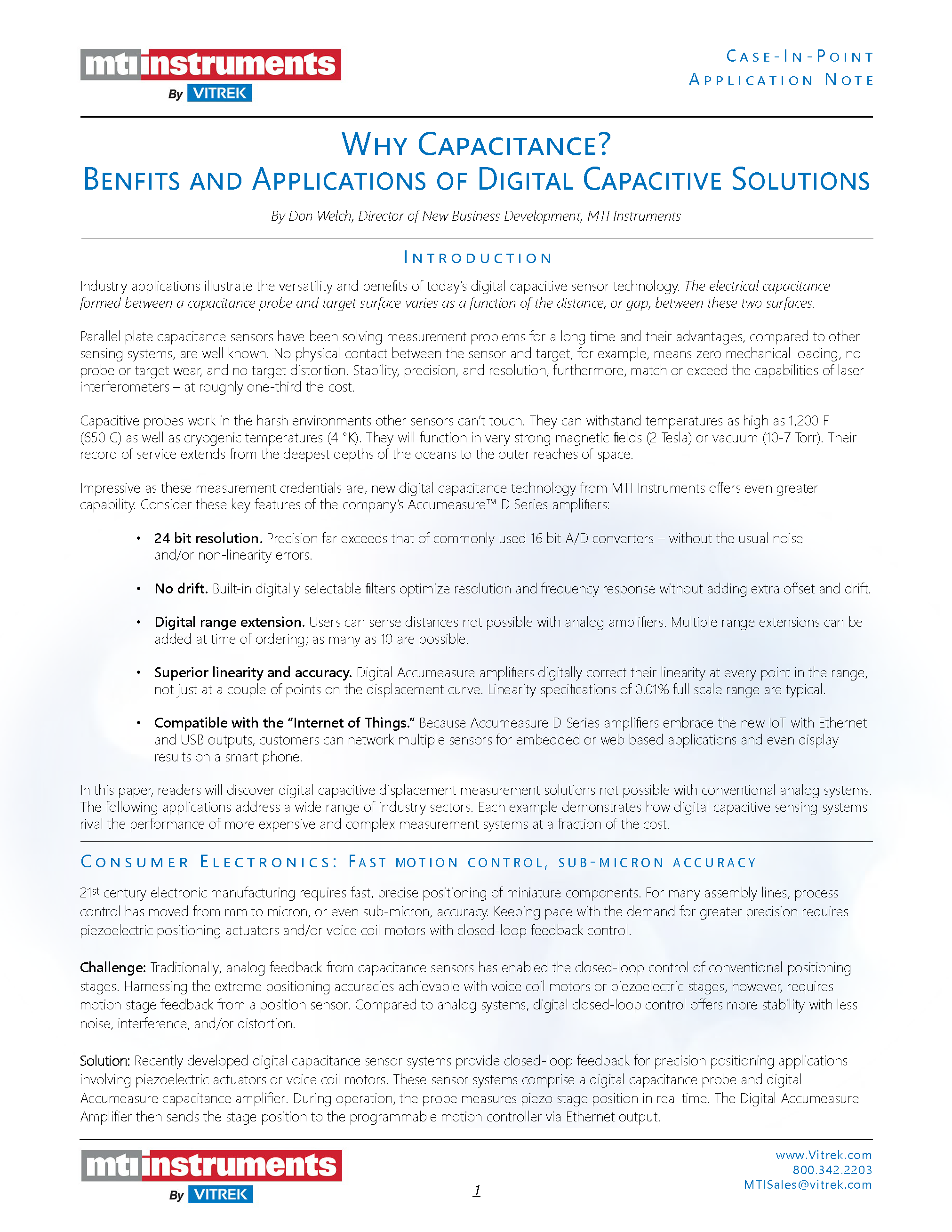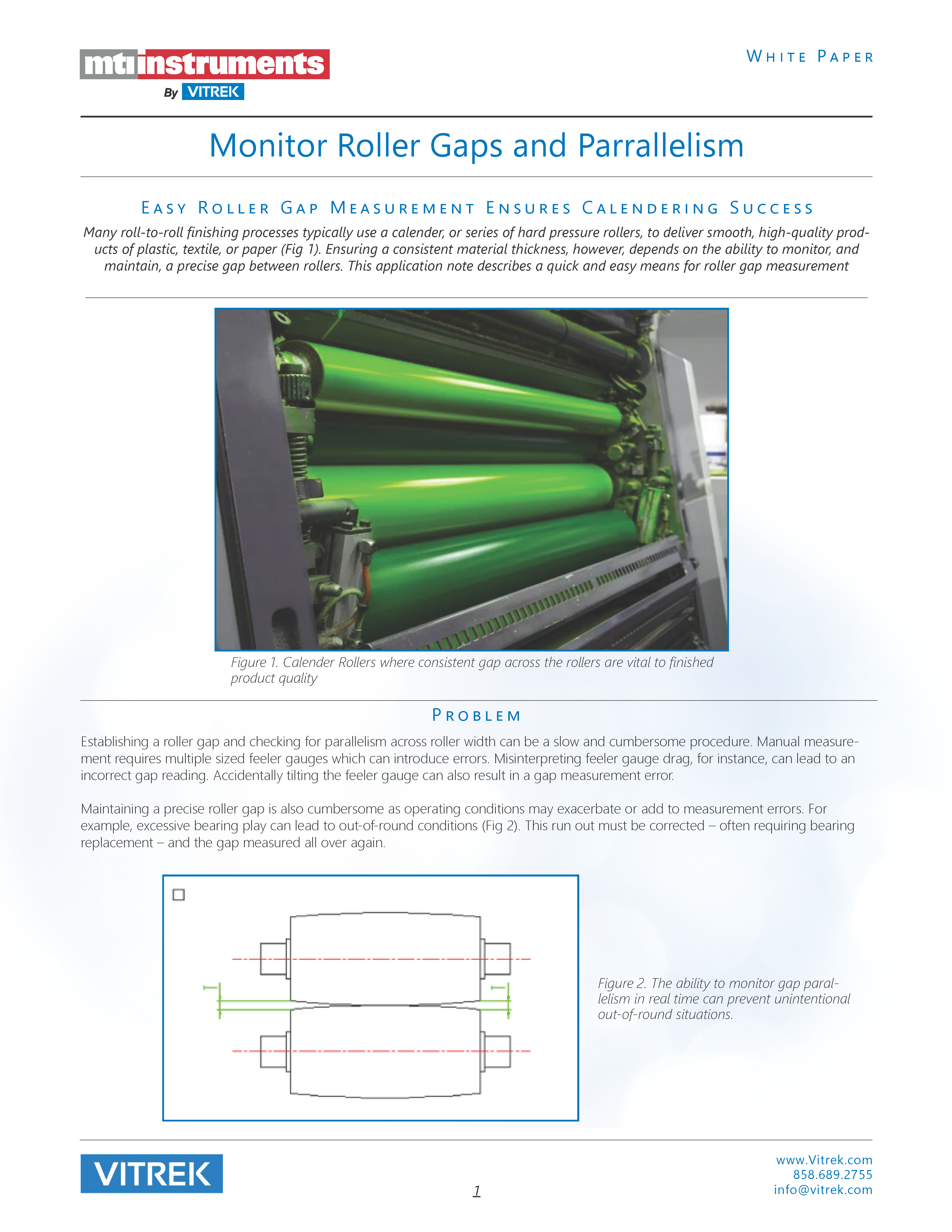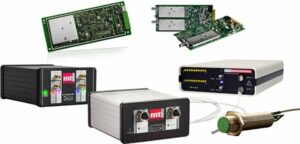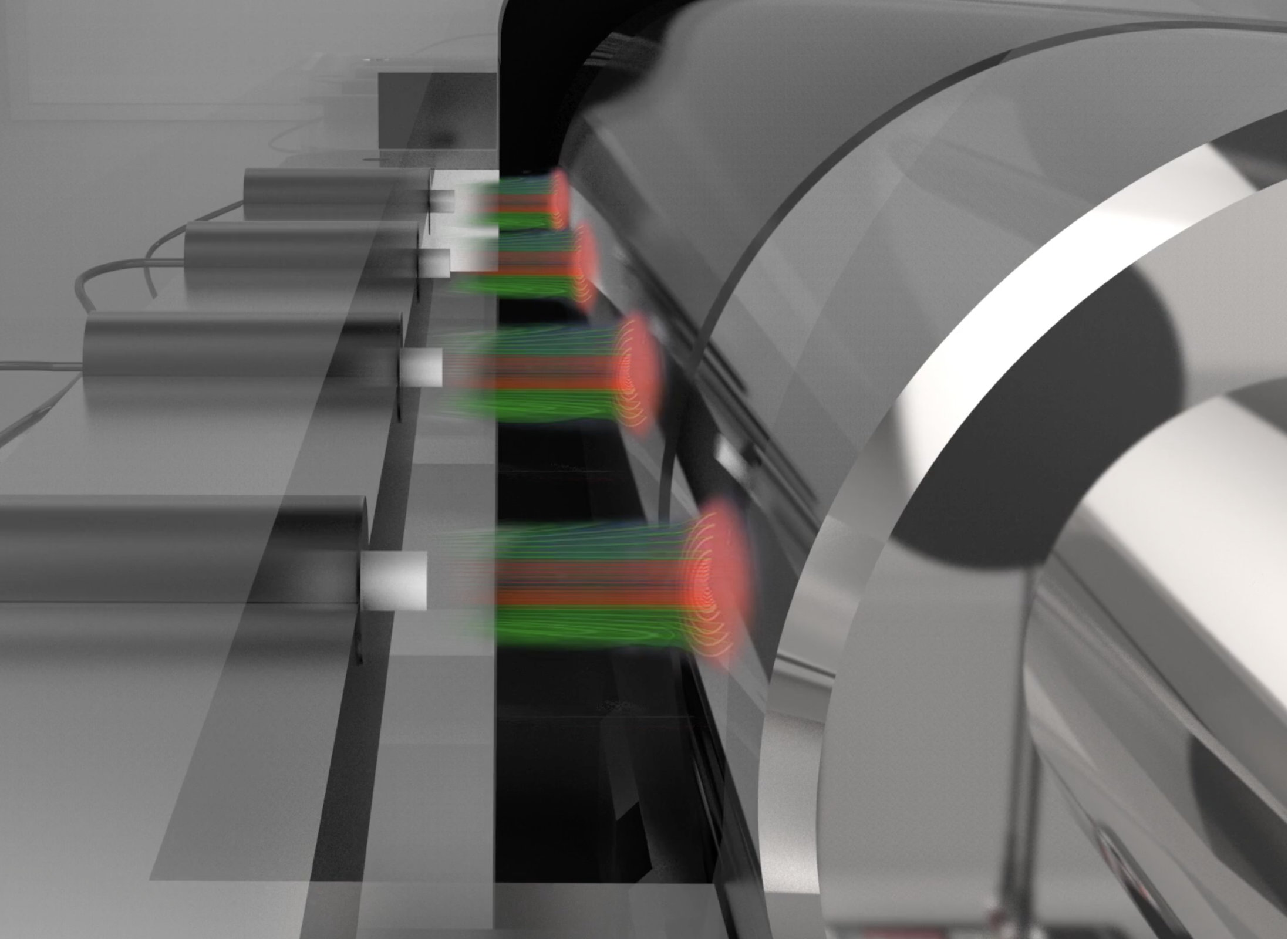MTI Instruments Whitepaper: Capacitance Guide to Industrial Applications
Capacitance Guide to Industrial Applications This guide from MTI Instruments explains what you need to know about using electrical capacitance for measurement in industrial applications, including advanced manufacturing. Basic Principles Capacitance is the ratio of the change in an electric charge to the corresponding change [...]









